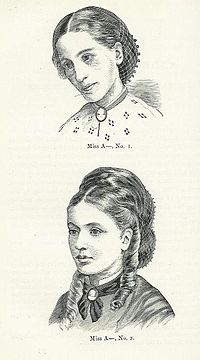
Photo from wikipedia
The body schema is a much discussed aspect of body awareness. Although there is still no single definition, there is widespread consensus that the body schema is responsible for movement… Click to show full abstract
The body schema is a much discussed aspect of body awareness. Although there is still no single definition, there is widespread consensus that the body schema is responsible for movement and interaction with the environment. It usually remains outside of active consciousness. There are only few investigations on influences on the body schema and none of them investigated feeling of satiety or hunger. Thirty-two healthy women were investigated twice, one time sat and the other time hungry. To measure the body schema, we used a door-like-aperture and compared the critical aperture-to-shoulder-ratio (cA/S). A cover story was used to ensure that the unconscious body schema has been measured. We found a significantly higher cA/S for satiety compared to hungry, which indicates that during satiety participants rotate their shoulders for relatively larger door compared to hunger, unconsciously estimating their body size to be larger. We showed that even a moderate rated feeling of hunger or satiety leads to an adjustment in body-scaled action and consequently also an adaptation of body schema. It suggests that, in addition to the visual-spatial and the proprioceptive representation, somatic information can also be relevant for the body schema.
Journal Title: Scientific Reports
Year Published: 2022
Link to full text (if available)
Share on Social Media: Sign Up to like & get
recommendations!